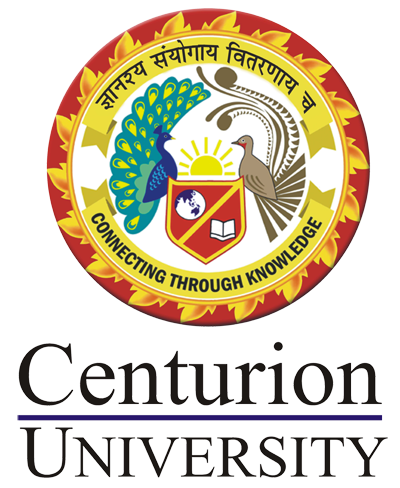per person /
Free
Limnology
Course Attendees
Still no participant
Course Reviews
Still no reviews
Course Name : Limnology
Code(Credit) : FSEM 1203(2-1-0)
Course Objectives
- To study about the Inland Water bodies
- To know about history and development of Limnology
- To Know Distribution and dynamics of freshwater bodies
- To know Classification and general characteristics of lotic and lentic water bodies.
Learning Outcomes
- The general aim of the course is to give students knowledge of relevance for their future career in limnology, in research or with an applied focus. On completion of the course, the student should be able to:analyse and evaluate abiotic and biotic conditions in aquatic systems
- a) account for structure and dynamics in biogeochemical cycles and organism communities
- b) carry out basic sampling and analyses in freshwater field/laboratory systems
- c) plan and carry out experiment/field studies
- d) present and evaluate experiment/field studies both orally and in writing.
Course Syllabus
- Theory
- Introduction to limnology: inland water types, their characteristics and distribution; ponds and lakes; streams and rivers; dynamics of lentic and lotic environments. Lakes - their origin and diversity. Famous lakes of the world and India; nature of lake environment; morphometry, physical and chemical conditions and related phenomena; biological relations: influence of physical and chemical conditions on living organisms in inland waters. Plankton: planktonic organisms; classification of plankton; distribution of plankton: geographic, vertical, horizontal and seasonal distribution of phytoplankton and zooplankton; seasonal changes of body form in planktonic organisms; food of planktonic organisms; primary productivity: Aquatic plants: characterstics, classification, zonation, seasonal variations, quantity produced chemical composition distribution in different waters, limnological role. Nekton: composition, distribution, movements. Benthos: classification; periphyton; zonation; distribution; movements and migration; seasonal changes in benthos, profundal bottom fauna. Biological productivity: circulation of food material; classification of lakes based on productivity; laws of minimum; biotic potential and environmental resistance; quantitative relationships in a standing crop; trophic dynamics; successional phenomena; indices of productivity of lakes; artificial enrichment. Lotic environments: running waters in general; physical conditions; classification of lotic environments, biological conditions; productivity of lotic environments. influence of currents; plant growth; plankton; nekton; benthos; temporary and head waters streams; ecological succession.
- Practical
- Morphometry of lakes, ponds and streams. Determination of physical characteristics of lentic water bodies. Determination of chemical characteristics of lentic water bodies. Determination of physical characteristics of lotic water bodies. Determination of chemical characteristics of lotic water bodies. Collection and identification of fresh water phytoplankton. Enumeration and biomass estimation of freshwater phytoplankton. Estimation of primary productivity in fresh water bodies. Collection and identification of fresh water zooplankton. Enumeration and biomass estimation of fresh water zooplankton. Collection and identification of benthos from lakes and ponds, streams and canals. Collection and identification of nekton/aquatic insects from freshwater bodies. Collection and identification of aquatic plants from different fresh water bodies. Field visit to lotic and lentic water bodies.
- Reference Book
- Meteorology -- R.Ghadekar
- Physical geography ---- Indra Singh
- Meteorology ----DrJaman Joseph (CIFNET)
- Tropical meteorology ----H.Rahil
- Physical geography (Oceanography) --- Bharadwaj
Session Plan
Session 1
Introduction to limnology: inland water types, their characteristics and distribution; ponds and lakes; streams and rivers; dynamics of lentic and lotic environments.
Session 2
- Ecology of lake
- Lake Morphology
- Lake Zonation
Session 3
Practical-Determination of pH, Dissolved Oxygen, free CO2 , total alkalinity and hardness
Session 4
Famous lakes of the world, Largest by continent, Other Notable lakes of the world
Session 5
- Primary productivity
- Definition, photosynthesis, respiration, gross primary productivity, net primary productivity
- Methods of estimation of primary productivity
- Factors influencing primary productivity
Session 6
Practical-Determination of BOD and COD
Session 7
Plankton: planktonic organisms; classification of plankton; distribution of plankton: geographic, vertical, horizontal and seasonal distribution of phytoplankton and zooplankton
Session 8
Aquatic plants
Characteristics, classification, zonation, seasonal relations, quantity produces
Chemical composition, distribution in different waters and its limnological role
Session 9
Practical-Collection and identification of fresh water phytoplankton
Session 10
Nekton: composition, distribution, movements
https://www.slideshare.net/Kantharajan/claasification-of-zooplankton-and-benthos
Session 11
Benthos: classification; periphyton; zonation; distribution; movements and migration; seasonal changes in benthos, profundal bottom fauna.
Session 12
Practical-Collection and identification of freshwater zooplankton
Session 13
Biological productivity: circulation of food material; classification of lakes based on productivity
Session 14
Biological relations of living organisms
Shoreline, Relation of photosynthetic and decomposition zones
Relation of slope and the deeper decomposition zone, Productive volume
Session 15
Biological relations of living organisms
Symbiosis, Mutualism, Parasitism,Commensalism, Predation or grazing Competitive,
Auto and allo-inhibition, Auto and allo-stimulation
Impacts of human beings on algae
Session 16
Practical-Collection and identification of aquatic plants from different fresh water bodies
Session 17
Physical characteristics of inland waters
Pressure, Compressibility, Density, Mobility(viscosity),
Surface film, Colour, Turbidity- Effects of materials in suspension
Session 18
- Chemical characteristics of inland waters
- Dissolved gases- definition, solubility of dissolve gases & factors affecting the solubility
Dissolved Oxygen(O2)- causes of oxygen reduction, Principle of Diel oxygen change
Dissolved carbon dioxide- sources, causes of reduction of carbon dioxide in freshwaters.
Session 19
- Chemical characteristics of inland waters
- Dissolved Solids and inorganic matter: Solubility of solids in water, Major ions in
freshwaters Dissolved inorganic solids- Nitrogen, Phosphorus, Sulfur, Silicon etc. Other Elements:- Calcium, Magnesium, Sodium, Potassium, Iron and Manganese, Chloride, Dissolved Organic Matter
Session 20
Practical-Measurement of turbidity and transparency of water
Session 21
Ecology of streams, rivers, reservoirs and tanks
Streams-Introduction, Physical and Chemical conditions
River- topography, ecology, flooding
Session 22
Reservoirs-Introduction, topography, physical and chemical conditions
Tanks- introduction, topography, physical and chemical conditions.
Session 23
Lakes: their origin and diversity
Thermal classification of lakes
Session 24
Size & depth of lake, Lake margin, Nature of margin
Shore dynamics, Lake bottom, Diversity of lake..
Session 25
Practical-Collection, identification, quantitative and qualitative estimation of benthos of lake
Session 26
Lotic environments
Running waters in general
Physical conditions and chemical conditions
Classification of lotic environments
Session 27
Lotic environments
Biological conditions and productivity of lotic environments
Influence of currents on plant growth
Plankton, benthos and ecological succession
Session 28
Practical-Collection & identification of aquatic insect from freshwater bodies
Case Studies
Case Studies
Our Main Teachers

Mr. Chandan Haldar is working as Assistant Professor in the School of Fisheries, Centurion University of Technology and Management, Paralakhemundi Campus, Odisha. He has completed his M.F.Sc from ICAR-Central Institute of Fisheries Education, Mumbai, Maharashtra India and his Ph. D. thesis topic is “Identification of Growth Associated SNPs in Clarias magur (Hamilton, 1822) […]

